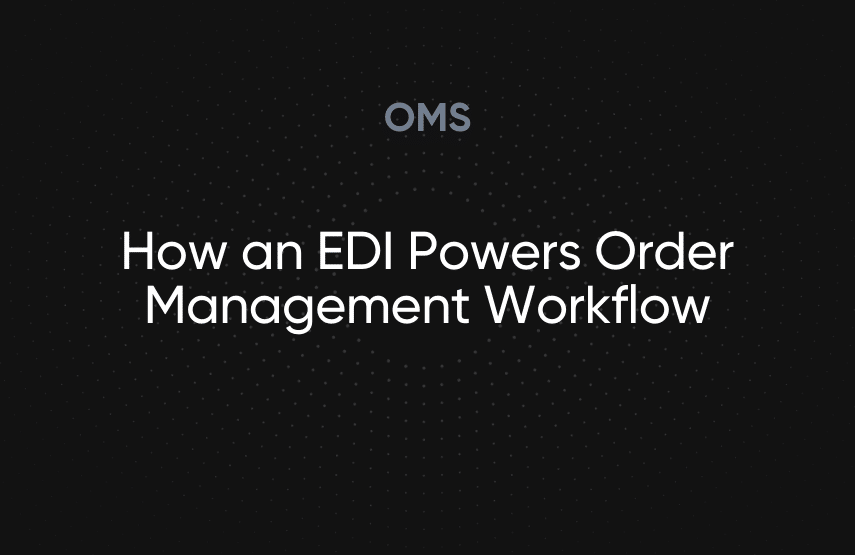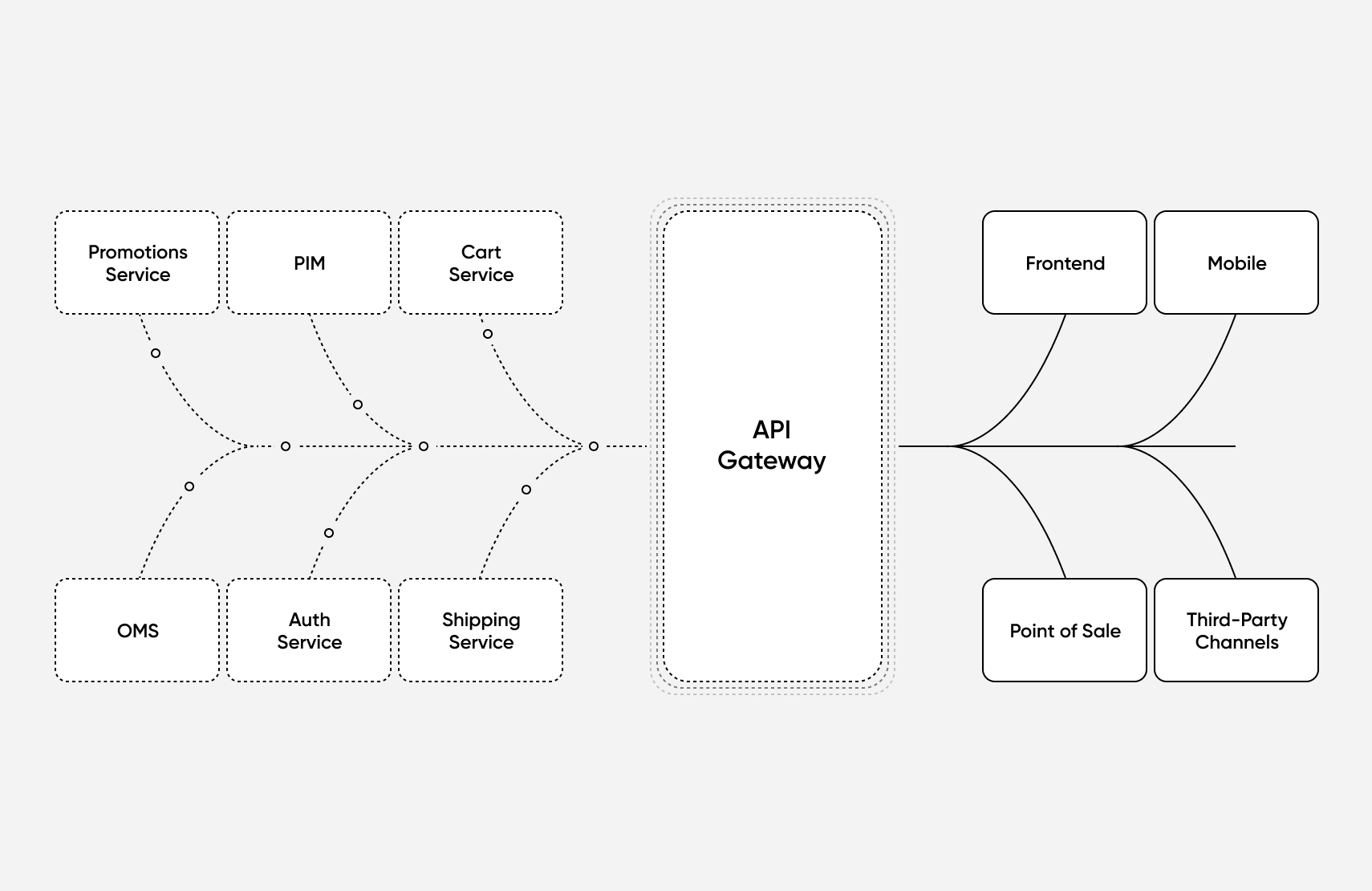How an EDI Powers Order Management Workflow

EDI order management uses electronic exchanges to manage orders between vendors and retailers.
Although EDI saves trading partners from arduous paper-based transactions, it’s not well-suited to meet today’s customer demands.
A modern set of alternatives including APIs and event-driven architecture can effectively replace EDI.
fabric OMS uses APIs to simplify the order fulfillment process and create a seamless experience for retailers and vendors.
Electronic data interchange (EDI) helps retailers and vendors manage orders quickly, efficiently, and reliably while maintaining effective communication. In addition, companies can easily exchange business documents such as purchase orders and invoices.
[toc-embed headline=”Overview of EDI Order Management”]
Overview of EDI Order Management
Before EDI, companies relied on paper-based invoices, order notes, receipts, and other documents sent via email. This process appears streamlined. However, such a process leads to high labor changes, low accuracy, increased uncertainty, and exhausted resources.
EDI replaces traditional business communication by enabling a “paperless” exchange. Companies can exchange all data electronically using point-to-point connections or EDI VANs (value-added networks). EDI simplifies the complexity of buying and selling products between B2B businesses and helps create a streamlined order fulfillment process.
To perform EDI transactions between trading partners, the manufacturing and retail industry use these indices in their order management processes:
- Purchase order (EDI 850)
- Purchase order acknowledgment (EDI 855)
- Advanced shipping notice (EDI 856)
- EDI 810 invoice
- Ship-from-warehouse (EDI 940)
From the perspective of a company’s ERP system, an inbound purchase order is called a sales order. In contrast, a purchase order from the buyer’s ERP system is called a purchase order (EDI 850) or PL.
After the supplier receives a purchase order, they’ll send an acknowledgment document (EDI 855) to the buyer, followed by the invoice (EDI 810). If one of the supplier’s warehouses is close to the buyer’s location, the buyer may receive a ship-from-warehouse (EDI 940) notification indicating they will receive their orders from a warehouse.
Once the item is ready for shipping, the buyer gets an advance shipping notice (EDI 856) to communicate the shipment is en route to the destination. The buyer then confirms that the product arrived according to specification or requests a chargeback.
[toc-embed headline=”How EDI Works with OMS”]
How EDI Works with OMS
EDI eliminates the complexities of manual paper-based transactions. It automates the process from the receipt of retailer purchase orders to the transmission of supplier invoices and exchanging other transactional documents.
In this process, the retailer specifies formatting requirements for the EDI documents and relies on an EDI provider to translate everything into a readable format for the supplier. The EDI provider also helps the supplier comply with the retailer’s specifications.
However, to ensure seamless EDI order processing and fulfillment, the supplier needs an order management system (OMS) to manage their EDI inventory and orders across channels.
An order management system helps the supplier centralize specific document delivery and client-fixing communication in a single centralized interface. It also helps cut costs, and lets vendors interact with warehouses and third-party logistics (3PLs) providers faster.
Because EDI relies on a handful of standard file formats (ANSI, EDIFACT, TRADACOMS, and ebXML) and different protocols, many legacy order management systems cannot process EDI effectively. In addition, these legacy systems don’t have the flexibility to adapt to different EDI formats. Thus, it is important to consider alternatives to EDI.
[toc-embed headline=”EDI Alternatives for Order Management”]
EDI Alternatives for Order Management
The steep learning curve and high integration costs make EDI unfit for today’s e-commerce world. With Amazon’s one-day delivery, today’s customers want greater transparency, speed, and accuracy from retailers, changing the way brands sell.
Alternatives to EDI order management process have risen with the two most prominent ones being APIs and EDA. With decoupled frontends and backends, APIs and event driven architecture are much more suited to scale with the growing demands.
APIs

The primary role of application program interfaces (APIs) is to streamline communications between two applications. For example, APIs let independent services, such as cart, checkout, pricing, and several payment gateways work together without having them rely on each other.
With the EDI order management process, the EDI dictates standards of purchase order numbers, SKUs, and quantities, the position of the data, and the relationship between two or more data points. These details are complex and time-consuming, requiring a certain level of expertise to process.
APIs simplify this by featuring the data points that must be changed. It can also reject errors if the retailer and one of the trading partners transmit incorrect information. Plus, it empowers retailers to communicate with other API-driven services more efficiently.
Event driven architecture (EDA)
Event driven architecture (EDA) powers applications to communicate asynchronously. As its name implies, EDA is event-driven, letting multiple applications communicate simultaneously in real-time. This enables streamlined order processing between vendors and retailers, which can seamlessly transmit messages from their CRM to OMS and other tech stacks.
Like APIs, event-driven architecture simplifies the complexities and standards of EDI order management. Not only is the process simplified, but it is also more accurate. For example, the event router communicates with OMS when an order is sent, providing real-time data on inventory.

Tech advocate and writer @ fabric.